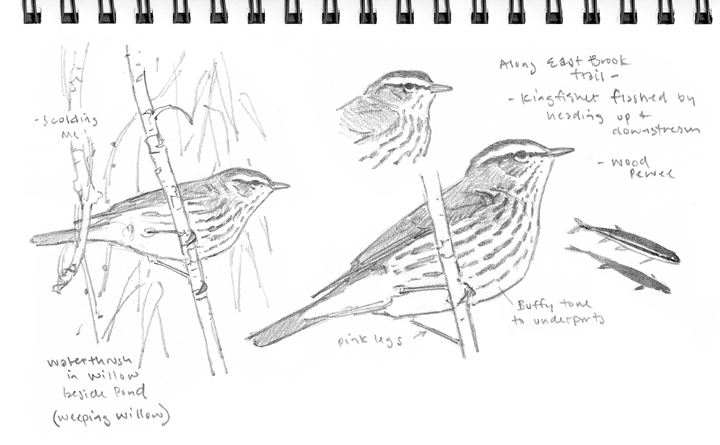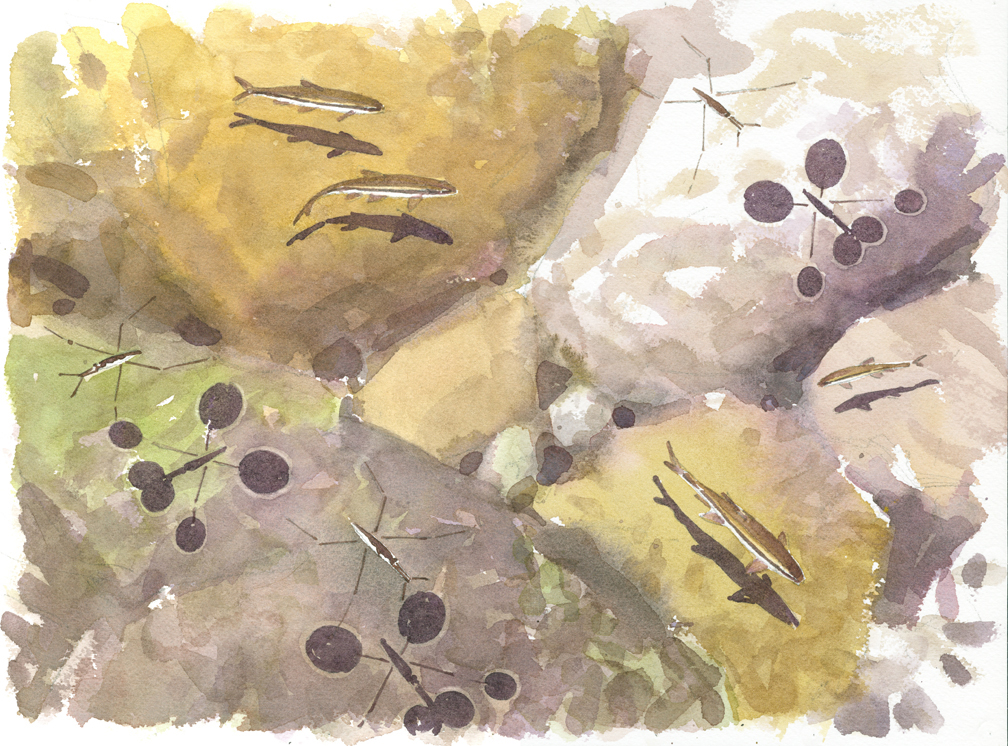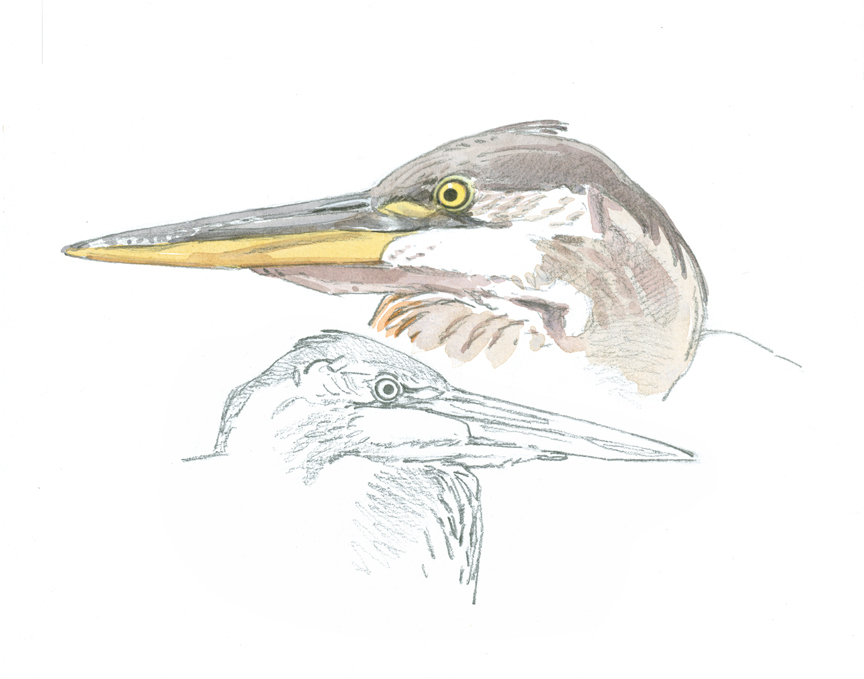August 23, 2017
Felix Neck Wildlife Sanctuary, Edgartown
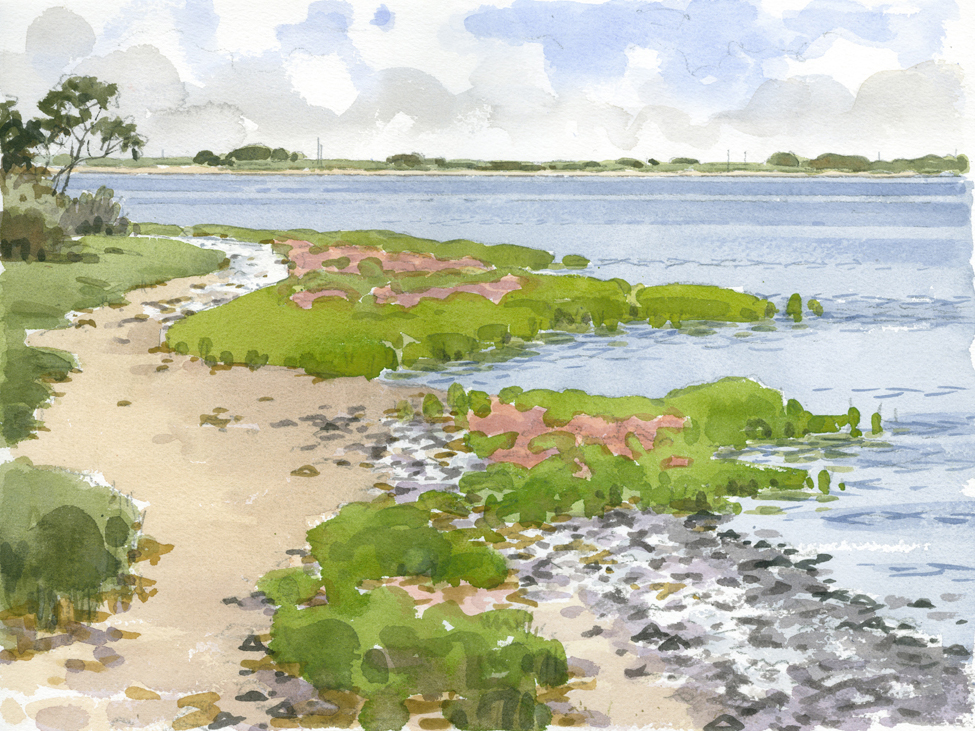
I’ve arranged to spend my overnights on Martha’s Vineyard with artist Sean Murtha and his family, who are vacationing on the island (my sincere THANKS to Sean, Deidre and Graham for putting up with a “third wheel” during their valuable family vacation time!)
I arrived a day ahead of the Murtha’s and now drive to Edgartown to meet them on the incoming ferry. We find our way to their rental house and settle in.
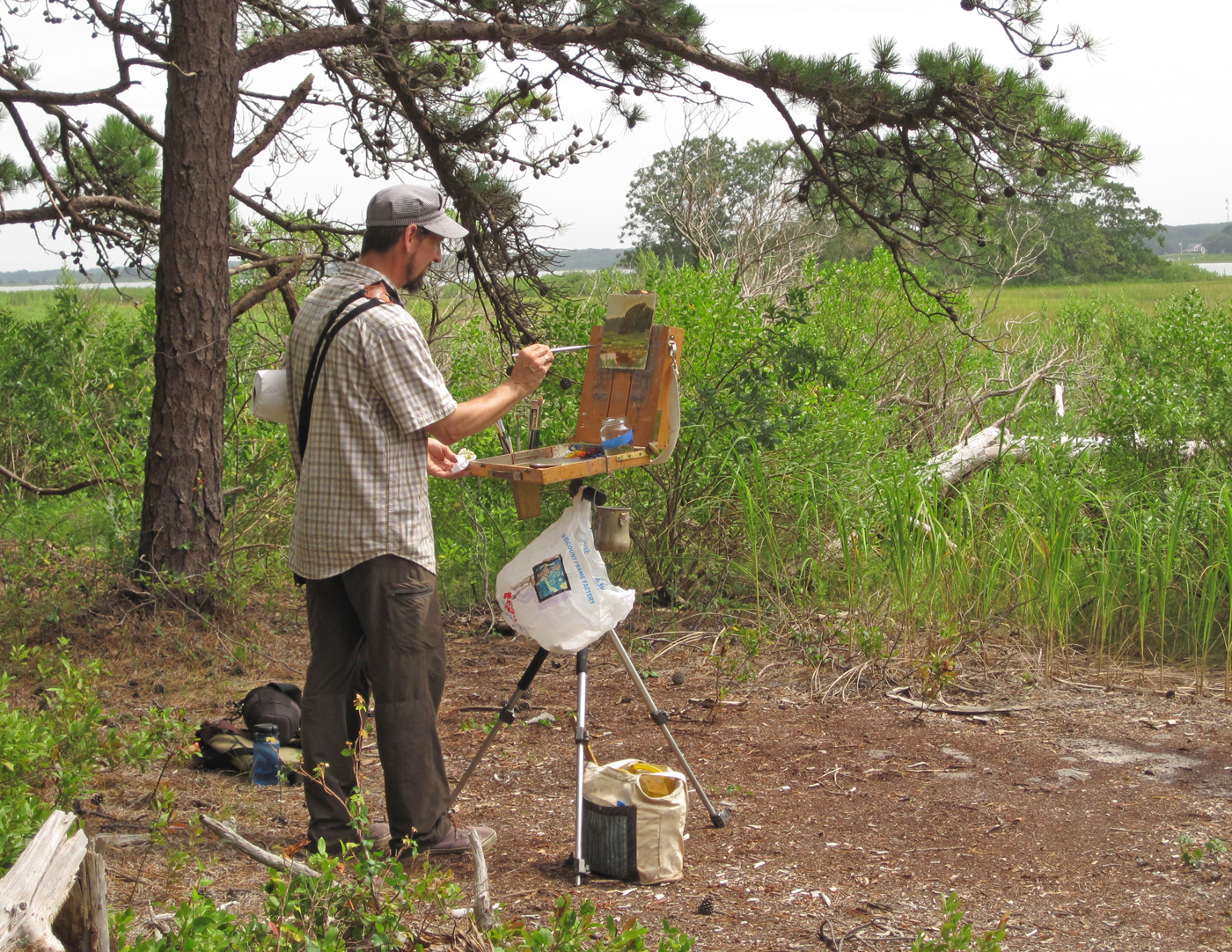
Sean Murtha
Next morning Sean joins me at Felix Neck for a day of sketching and painting. It’s nice to have a field companion along, and thanks to Sean, I have some photos of myself at work for this blog.
We pause along the Marsh Trail to watch some laughing gulls loafing along the shore. Their heads are just visible above the marsh grass and sea lavender, which makes for an interesting motif.

sketchbook study of Laughing Gull and Sea Lavender, pencil, 5″ x 10″
I make a detailed drawing in my sketchbook that I use later for this studio watercolor:
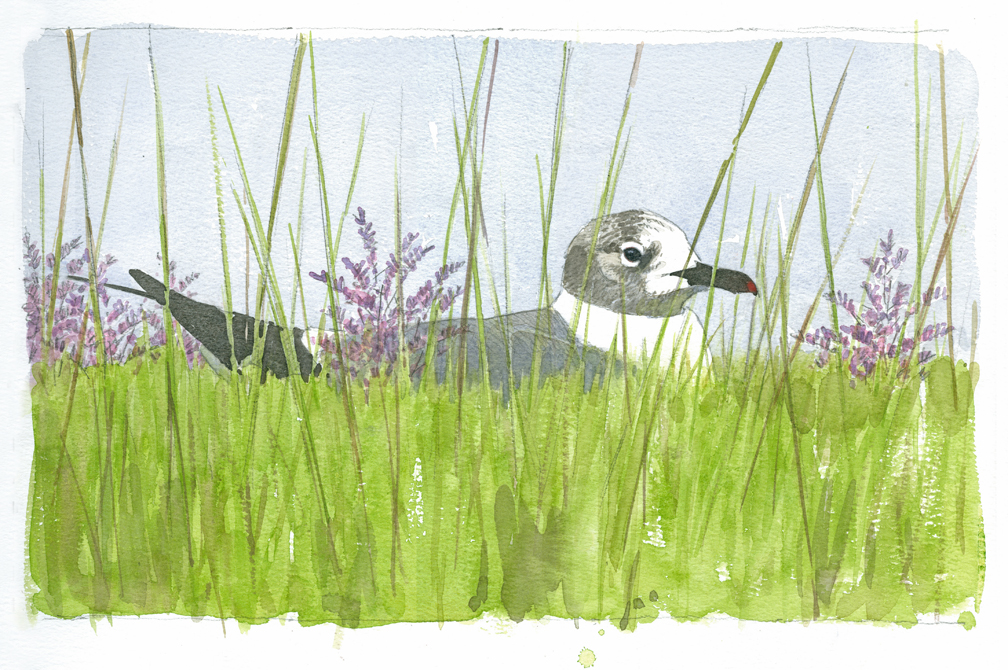
Laughing Gull and Sea Lavender, watercolor on Winsor & Newton cold-press, 10.5″ x 15.5″
You’ll notice that I’ve made some minor changes to my location sketch. I’ve cocked the primary feathers upward to make the bird look more relaxed and settled, and I’ve added more sea lavender at the left to create a repeated rhythm across the composition. In the final painting, the screen of grasses adds an intimacy to the scene – as if you’re nearby in the grass, sharing a private moment with the gull.
Along the shore, we see where structures have been installed to slow the erosion of the marsh – which in recent years has eroded as much as ten feet in some areas.
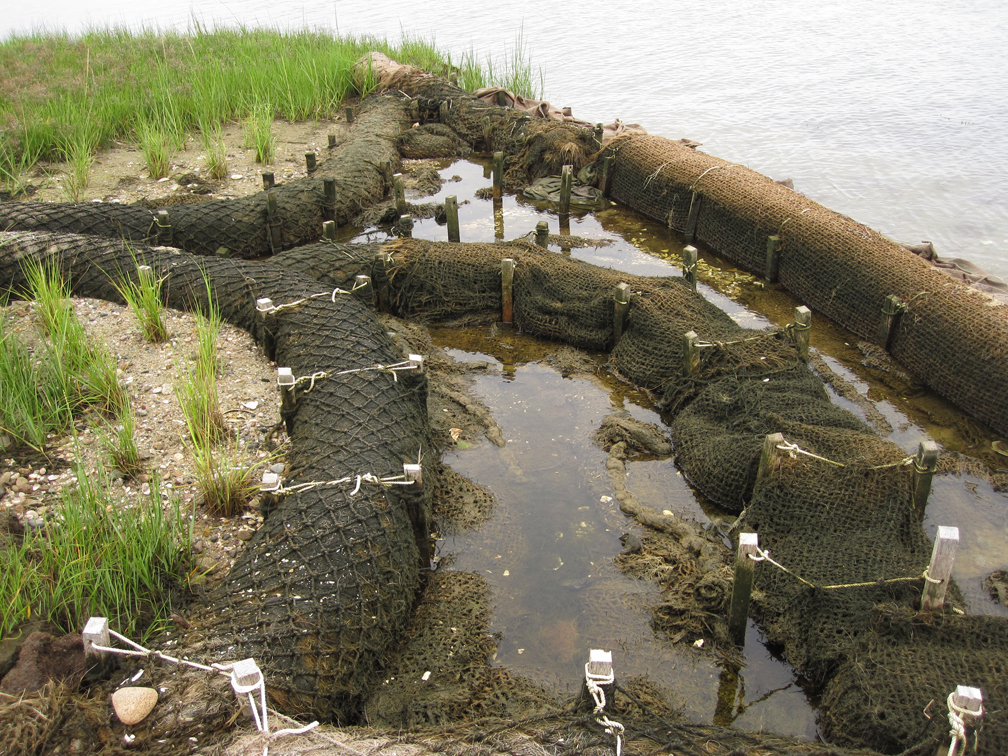
In response to these declines, Mass Audubon has initiated the Living Shoreline Restoration Project. This project aims to restore the marsh and the critical habitat it provides for wildlife, including juvenile fish and shellfish.
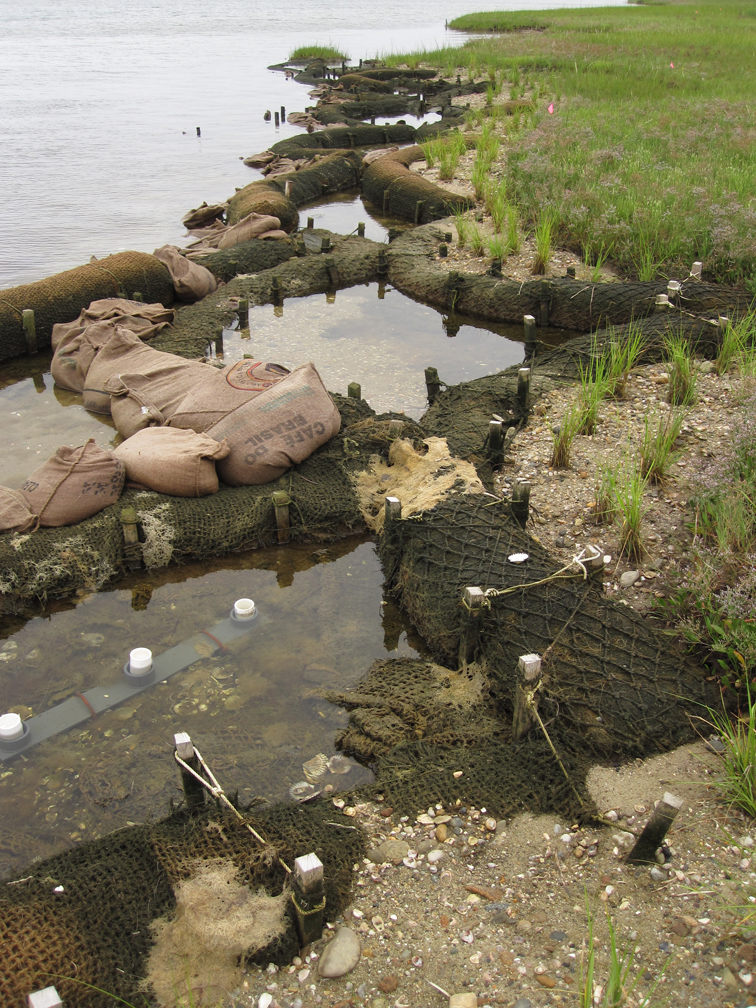
Partnering with the U.S. Environmental Protection Agency and the University of Rhode Island, the project uses various biodegradable structures to stabilize the shoreline and trap sediments that will encourage the growth of marsh vegetation. Sediment traps are also installed to monitor the progress of the restoration.
Further along the shore, at the end of the Old Farm Road, I set up to paint a view of Sengekontacket Pond with the Joseph Sylvia State Beach across the water, while Sean does some drawing nearby.

I block in the landscape with some broad washes of color – enough to establish the main shapes and color masses, and (more importantly) to set the mood. Sean interrupts his drawing to take some photos of me at work (thanks, Sean!)
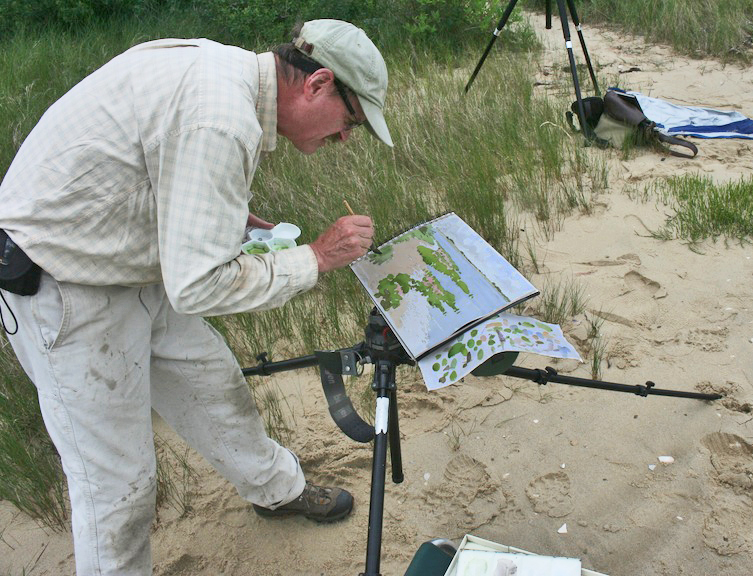
With the direction of my painting firmly established, I decide to finish it later – there’s a lot more for us to see and do today! Here’s the painting as it looked before I packed it away…

the first washes of color
And here’s the painting after bringing it to completion back in my studio…
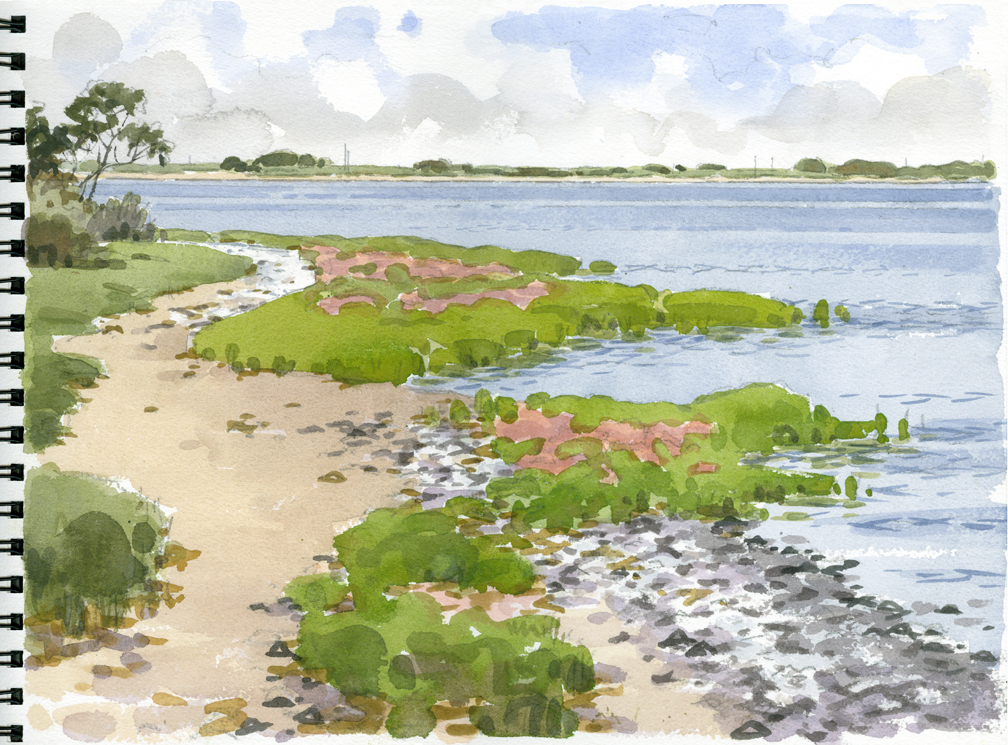
Shoreline at Felix Neck, watercolor on Arches cold-press, 10″ x 13.5″
The pinkish patches of sea lavender supply some important color variety, and the swath of cobble and stones at the bottom right of my painting adds some interesting texture. This small patch of cobble puzzled me – why HERE, on an otherwise unbroken stretch of sand? Later, I asked director Suzan Bellincampi about it and learned that this was excess building material the previous land-owner had dumped here after building some ponds elsewhere on the property.
After lunch, Sean and I split up. He wants to do a plein air oil painting of the marsh, and heads down the Marsh Trail. I meet with staff at the visitor center, and then strike out on the Old Farm Road. At the Waterfowl Pond, I train my scope on a young osprey perched in a large dead tree over the observation blind.
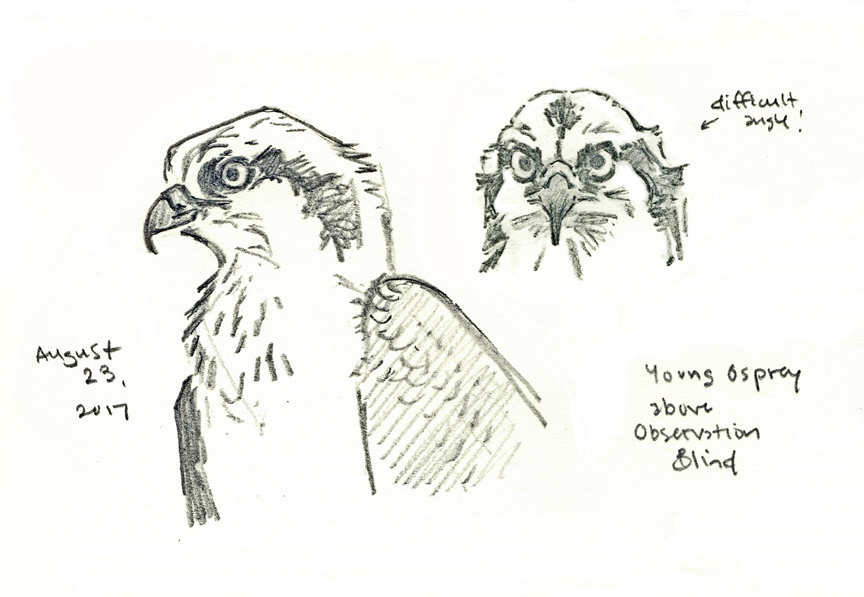
sketchbook studies of a young Osprey, pencil, 4.5″ x 7″
The bird is a good model, and I work out several views of its head and shoulders in my sketchbook. A head-on view proves especially challenging, requiring liberal use of my eraser before I get it right!
When I meet up again with Sean, he’s well along with his oil painting.
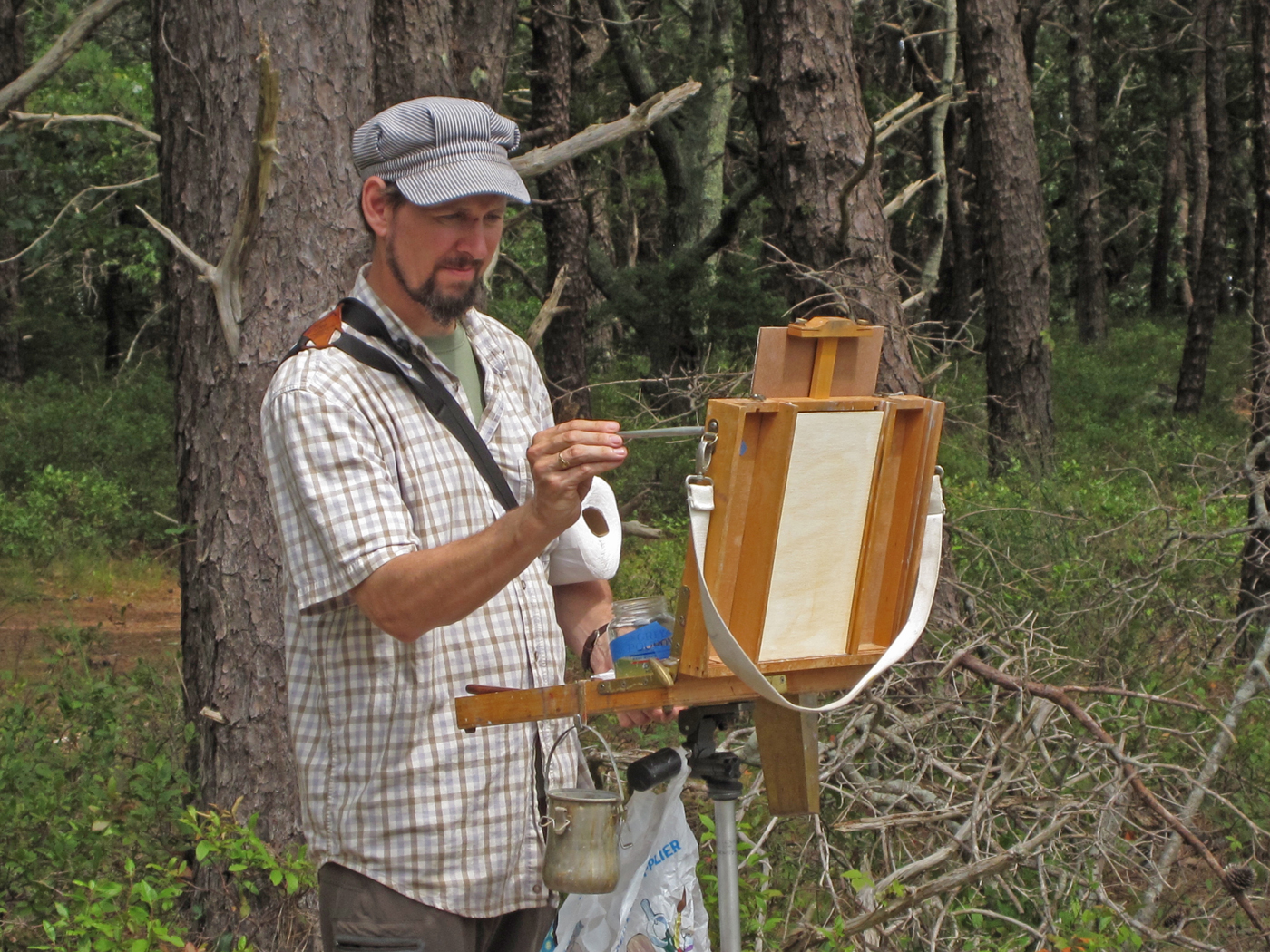
He’s working on a small canvas panel clamped onto a French easel. The finished painting beautifully captures a summer day on the marsh, complete with four great egrets!

The Marsh at Felix Neck – a plein air oil painting by Sean Murtha
I hike out to Majors Cove again, hoping for more looks at oystercatchers. No oystercatchers this time (not even the crippled bird that was here yesterday). I debate doing a drawing of a large dead white oak near the end of the Shad Trail.

It’s a stunning specimen, but I decide I can’t do it justice on the small sheets of paper I’m carrying. I think of my friend Debby Kaspari of Oklahoma, who does wonderful, large drawings of subjects like this. Later, back in my studio, I pulled out one of her drawings that I had obtained by trading with her several years ago.
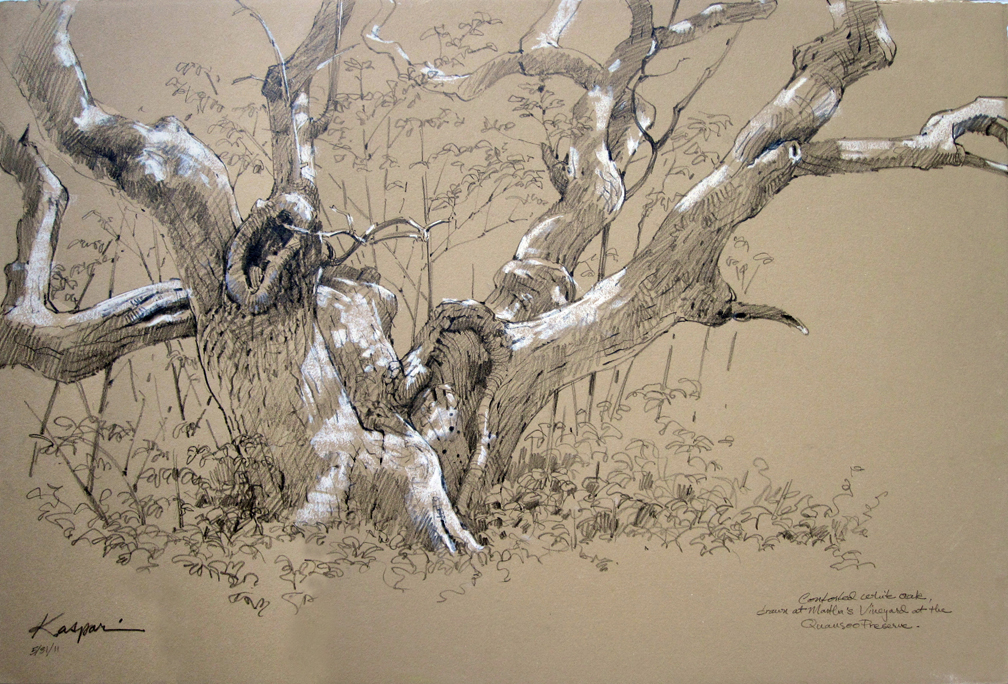
Graphite and pastel drawing on toned paper by Deborah Kaspari
It’s a graphite and pastel drawing on toned paper of a contorted white oak, and when I looked at the caption, I smiled. Her drawing was done on Martha’s Vineyard!



